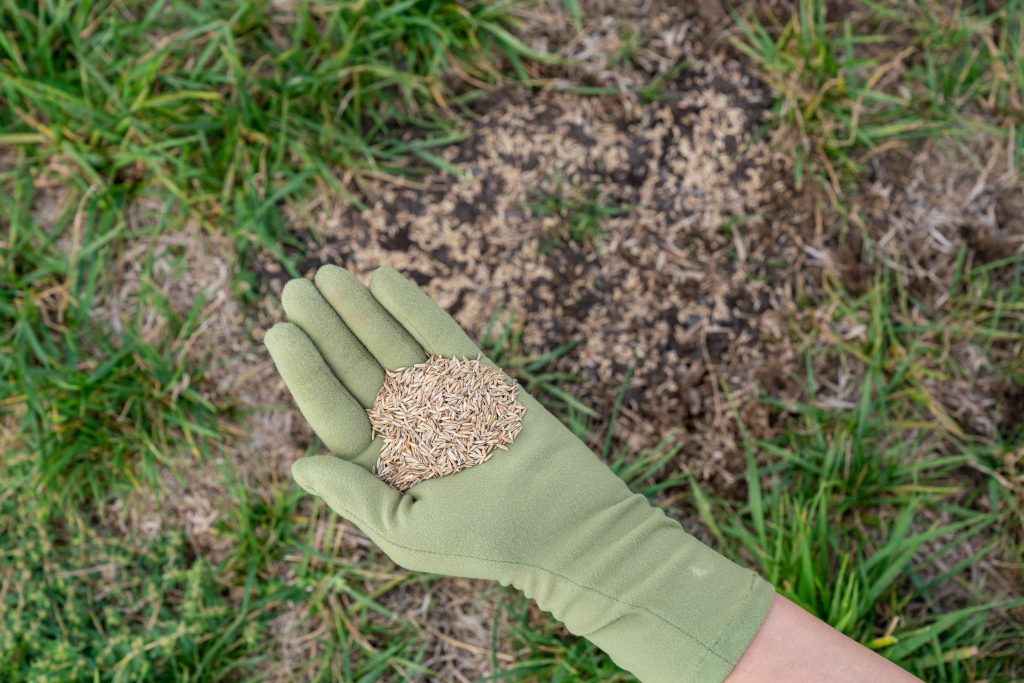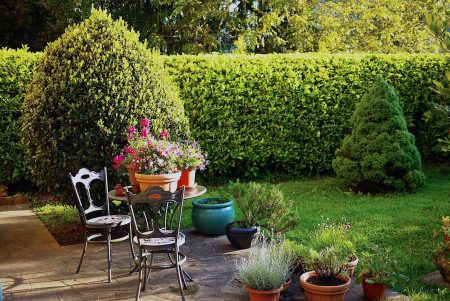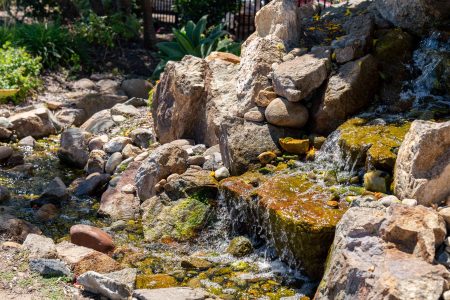Bare patches in an otherwise full, healthy lawn may be the result of pet urine, heavy foot or vehicle traffic, infestations by grubs or other pests, or a variety of other causes. There are several ways to effectively patch these areas, but you also need to consider the causes and correct them if you can.
For example, if a bare patch occurs because natural foot traffic continually pounds one area, no fix will be permanent unless you also solve the traffic flow issue. And if the bald spots are caused by a lawn grub problem, new bare patches will crop up as soon as you repair the old ones—unless you address the grubs.
There are two easy methods for restoring bald patches in your lawn: reseeding and patching with sod.
Before You Begin
Examine the bare patch or patches to determine the underlying cause and address the problem. Then, consider the patch method that’s best for your situation and the right time of year to do it,
Patching with seed:
- In northern cold-winter zones, the cool-season grasses that are most popular grow actively in later summer and fall, making this an ideal time for patching with seed. But you can also seed in early spring, provided it’s done early enough for the grass to be well established by the time the hot mid-summer months roll around.
- In warm-winter zones where warm-season grasses predominate, late spring and early summer is regarded as the best time to sow grass seed.
Patching with sod:
- You have a larger window when it comes to patching with sod. Professional recommendations for sodding a full yard are similar to seeding—early fall for cool-season grasses, late spring for warm-season grasses. But if you are cutting patches for bare spots, you’ll likely succeed during most of the growing season, provided you keep the sod patch moist while it is taking hold. Remember that sod supplies at garden centers are seasonal in many regions, so don’t wait too long.
- Sod will develop a shallow root system in about two weeks, but a deep root system can take as much as six weeks. If you live in a zone where hard frost arrives in early December, for example, it would be best to plant sod patches no later than mid-October.
Lawn Repair: Quick Guide
1. Patch your lawn. Fix bare or thin spots. Note that if you have a St. Augustine lawn, a better option is to pull up dead turf or edge out bare spots.
2. Provide water. Frequent watering is important for new seed and sod. However, make sure not to drown your soil; rather, keep it moist.
3. Feed the lawn. After six to eight weeks, provide the necessary nutrients that your grass needs to thrive.
4. Exterminate pests and remove weeds. Make sure your weed or bug control products can be used on new grass.
What You’ll Need
Equipment / Tools
- Garden rake
- Hand cultivator
- Core aerator (optional)
- Reflective tape or pinwheels (optional)
- Spade or garden shovel
- Garden knife (optional)
Materials
- Compost or loamy soil
- Grass seed or sod
- Stakes (optional)
- Burlap or wheat straw (optional)
Instructions
How to Reseed Bare Patches
A very easy and inexpensive method of patching bare spots is with seed. It only takes about 20 minutes of your time, plus some upkeep until the first or second mowing. The drawback is that it will take several weeks for the patch to be mowable, and as much as six months for it to fully blend into the rest of your lawn.
-
Rake the Area
Rake and remove any debris or dead grass from the area, using a garden rake. Now is also the time to examine the area for grub damage. If the damaged patch of lawn pulls up easily, like a rug being lifted, you may have a grub problem that needs correcting.
-
Loosen the Soil
Break up the soil with a hard-toothed lawn rake or a garden cultivator. If the soil seems heavily compacted, you might consider aerating it with a core aeration tool. This simple manual tool cuts aeration holes in the soil when you drive it into the ground with your foot.
-
Amend the Soil
Sprinkle several inches of compost or loamy soil and mix it into the existing soil with the rake. Turn the rake upside down and use the top edge to even out the surface, spreading some of the topdressing into the adjacent areas.
-
Spread the Seeds
Sprinkle grass seed evenly across the patch area, thick enough to cover the surface but not so thick that the seeds pile up on top of one another. Use an appropriate seed for your region and micro-climate (sun or shade). Perennial ryegrass should be a part of the blend because it will quickly germinate.
Some grass seed products marketed as “one step” have a very weak starter fertilizer and compost already mixed in. And some contain a mixture of recycled paper material designed to keep the seeds in place and absorb moisture as they germinate. There is nothing wrong with these products, but you can patch bare areas just as effectively—and more economically—with plain grass seed.
-
Rake the Seeds
Lightly rake in the seed to distribute it evenly. This will also cover some of the seed with a thin layer of soil, which can help keep it in place. Until the seeds germinate, you may need to protect the area from birds who love to eat the seed and new shoots. Using reflective tape or pinwheels mounted on short stakes can help deter them.
-
Begin Watering
Lightly water the area. Keep the seeds moist throughout the day. If hot weather is a problem, you can use a sheet of burlap to cover the patch. This will provide shade and keep the germinating seeds from drying out. Another method is to spread a thin layer of wheat straw over the seeded area to hold the seeds in place and keep them moist.
Your patch area will require light watering daily—or perhaps even twice daily—for the first 10 days or so, until the seeds germinate and sprout. Keep watering every two days for another month or so; then you can reduce watering to weekly as the new grass becomes mature.
-
Mow When Ready
Allow the grass to grow slightly longer than the rest of your lawn until the color of the patched area begins to blend in with the rest of your lawn. This may mean mowing around it for two or three mowing cycles. Some seed manufacturers suggest waiting a full seven weeks before mowing new grass.
How to Patch Bare Patches With Sod
A quicker method than seeding is to fill the bare spot with a patch cut from a roll of grass sod. This is a good method if you have several bare patches to treat. A roll of sod is usually less than $10, and you can cut many patches from a single roll. Within a couple of weeks, you’ll have an acceptable patch that has blended in with the surrounding grass.
-
Cut a Sod Patch
Use a sharp shovel or garden knife to cut a patch of sod grass that is slightly bigger than the bare area in your lawn. The patch should extend 2 inches or so beyond the edges of the bare spot into the healthy grass area.
-
Cut Out the Old Turf
Place the sod patch over the bare spot. Use a sharp shovel or garden knife to “trace” around the sod patch into the healthy lawn around the bare spot. Remove the sod patch, then remove the dead grass and the ring of healthy grass around the bare patch, using a hand cultivator. Remove a layer of soil below the grass: The goal is to dig down slightly so that the sod patch will sit down at the same level as the rest of your lawn.
-
Prepare the Soil
Loosen up the soil in your patch area, using a shovel, garden rake, or cultivator. You want the soil nice and loose so that the roots of the sod patch can quickly grow down and anchor in the soil.
-
Plant the Sod Patch
Place the sod patch into the excavated area, and compress it into the ground by walking on it repeatedly. Water immediately, and repeat watering two or three times a day for several days, until the sod patch is bonded and is beginning to grow actively.
Within two weeks or so, your sod patch should be seamless and indistinguishable from the rest of your lawn, but it will take as much as six weeks to be fully rooted. Don’t be surprised if it is a slightly different color at first; this will disappear soon.
Read the full article here









